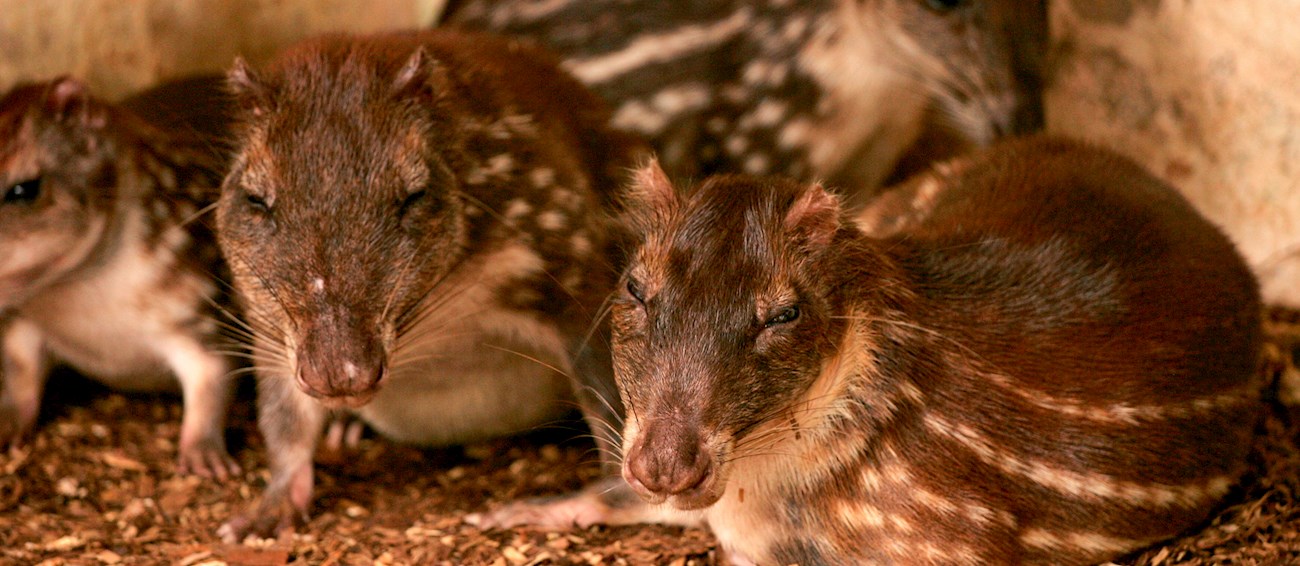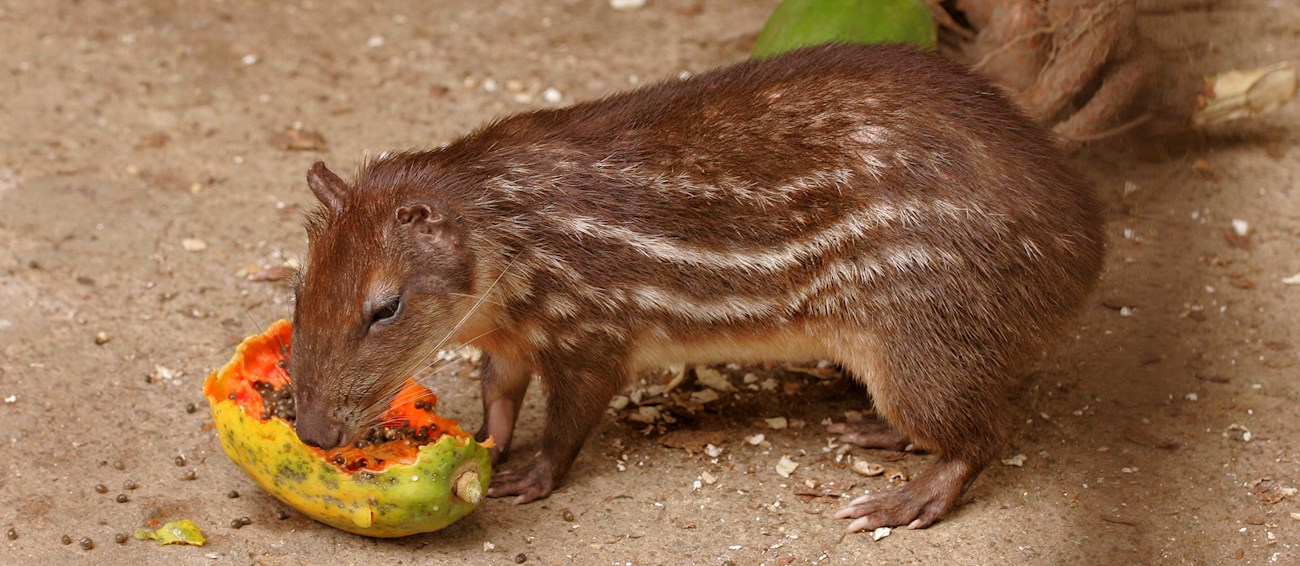Lowland paca
(Spotted paca, Tepezcuintle, Tepesquintle, Guardatinaja, Pisquinte, Jaleb, Conejo pintado, Guanta, Majás, Picuro, Jochi pintado, Boruga, Tinajo, Guartinaja, Gibnut, Labba, Lapa, Lappe)
The lowland paca (lat. Cuniculus paca) is a nocturnal rodent native to Central and South America. The lowland paca is a large rodent, with adults typically weighing between 6 to 12 kilograms (13 to 26 pounds), although they can become larger.
Physically, pacas are distinct for their robust bodies, short limbs, and spotted coat, which helps them blend into the forest floor. They have cheek pouches like squirrels, which they use to carry food. Their diet in the wild consists primarily of fruits and vegetation, though they are also known to eat small invertebrates.
The lowland paca lives in a variety of habitats, including rainforests, deciduous forests, and sometimes even in cultivated fields, as long as there is cover and a water source nearby. Read more
They are good swimmers and are often found near water bodies. Pacas dig burrows and are mostly solitary animals, coming out at night to feed. Lowland paca is also a traditional source of protein for people living in those regions. Its meat is considered a delicacy in various local cuisines and is featured in traditional dishes.
It is often compared to pork in texture and taste, with a slightly gamey flavor. The meat can be prepared in numerous ways, including roasting, stewing, and smoking. The habitat loss and hunting for their meat are potential threats to their population in some areas.
Conservation efforts and hunting regulations are important to maintain their populations in the wild.


